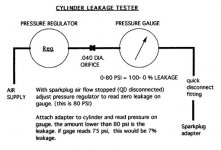jcatnite
Jedi Knight
Offline
Hello all,
Rusty, my 76 midget has developed the bad habit of smoking as of late. It doesn't do it all the time but it seems to be getting more and more regular. It's oil smoke to be certain but I'm not seeing any really bad fouling on the plugs. The engine smokes pretty heavily when I first take off from a light and gets better with each gear. By the time I'm into 4th there is no smoke that can be seen by someone following me. But after I slow down at the next light the cycle starts again. I'm thinking it could be one of two things. Badly worn valve guides or the emission system sucking oil from the valve cover through the carb. Any ideas from the experts?
Thanks in advance,
JC
Rusty, my 76 midget has developed the bad habit of smoking as of late. It doesn't do it all the time but it seems to be getting more and more regular. It's oil smoke to be certain but I'm not seeing any really bad fouling on the plugs. The engine smokes pretty heavily when I first take off from a light and gets better with each gear. By the time I'm into 4th there is no smoke that can be seen by someone following me. But after I slow down at the next light the cycle starts again. I'm thinking it could be one of two things. Badly worn valve guides or the emission system sucking oil from the valve cover through the carb. Any ideas from the experts?
Thanks in advance,
JC

 Hi Guest!
Hi Guest!

 smilie in place of the real @
smilie in place of the real @
 Pretty Please - add it to our Events forum(s) and add to the calendar! >>
Pretty Please - add it to our Events forum(s) and add to the calendar! >> 

